Anti-tank hedgehogs on the coast of the Tuzly Estuaries National Park. Photo by Yurii Koshkovskyi, nikcenter.org
The destruction of nearly three dozen warships, mining of the waters, powerful attacks on port infrastructure, and the destruction of the Kakhovka hydroelectric power station dam. For almost two years, Russia’s full-scale invasion has been going on not only on land but also in the Black Sea. Satellite images show oil slicks spreading across the sea, and the wreckage of sunken warships could become a permanent source of pollution. Nikcenter and partners investigated how the great war affects the marine ecology.
How do civilians survive in the coastal towns of Ukraine
Ochakiv. A small coastal town located between Odesa and Mykolaiv. In the first hours of the full-scale war, the Russians launched powerful missile attacks on it. They targeted the military port and radar. Along with the strike came the first casualties. Since then, Russians have been mercilessly shelling the city almost every day.
Local resident Oleksandr Hromovyi has devoted his life to fishing. He says he became interested in fishing when he was six years old. Later, he was engaged in commercial fishing on a trawler in the ocean, and about 20 years ago, he and his brother founded a business.

Fisherman Oleksandr Hromovyi. Photo: nikcenter.org
Since February 24, 2022, Oleksandr’s family has been left without a single source of income. Due to the hostilities in the Black Sea, fishing stopped completely.
“Now there is zero, we are not fishing at all. There is a war, everything is mined. Our family’s livelihood depended on fishing by 150-200 percent. Now my wife and I live on a small pension. It’s very difficult,” the man says.

Coastal Ochakiv in November 23. Photo: nikcenter.org
Fishing, agriculture and the resort business are the main areas of activity for residents of Ochakiv and neighboring settlements located on the coast. The hostilities have affected the lives of each of them.
“The fish pavilion at the market used to have about a dozen traders three years ago. Now there are only two people working there. Three, five, or ten buyers come by every day. On some good, good trading days, 15-20. There is almost no trade,” Oleksandr says.
The Russians are shelling Ochakiv from the territory of the Kinburn Spit, which is part of the Black Sea Biosphere Reserve and the Sviatoslav Biloberezhzhia National Nature Park. The Russians turned the unique sand spit, which partially separates the Black Sea and the Dnipro-Bug estuary, into an ammunition depot and a location for military equipment. In the first year of the full-scale war alone, according to the Ministry of Environmental Protection and Natural Resources of Ukraine, 131 fires were recorded here on more than five thousand hectares of territory.
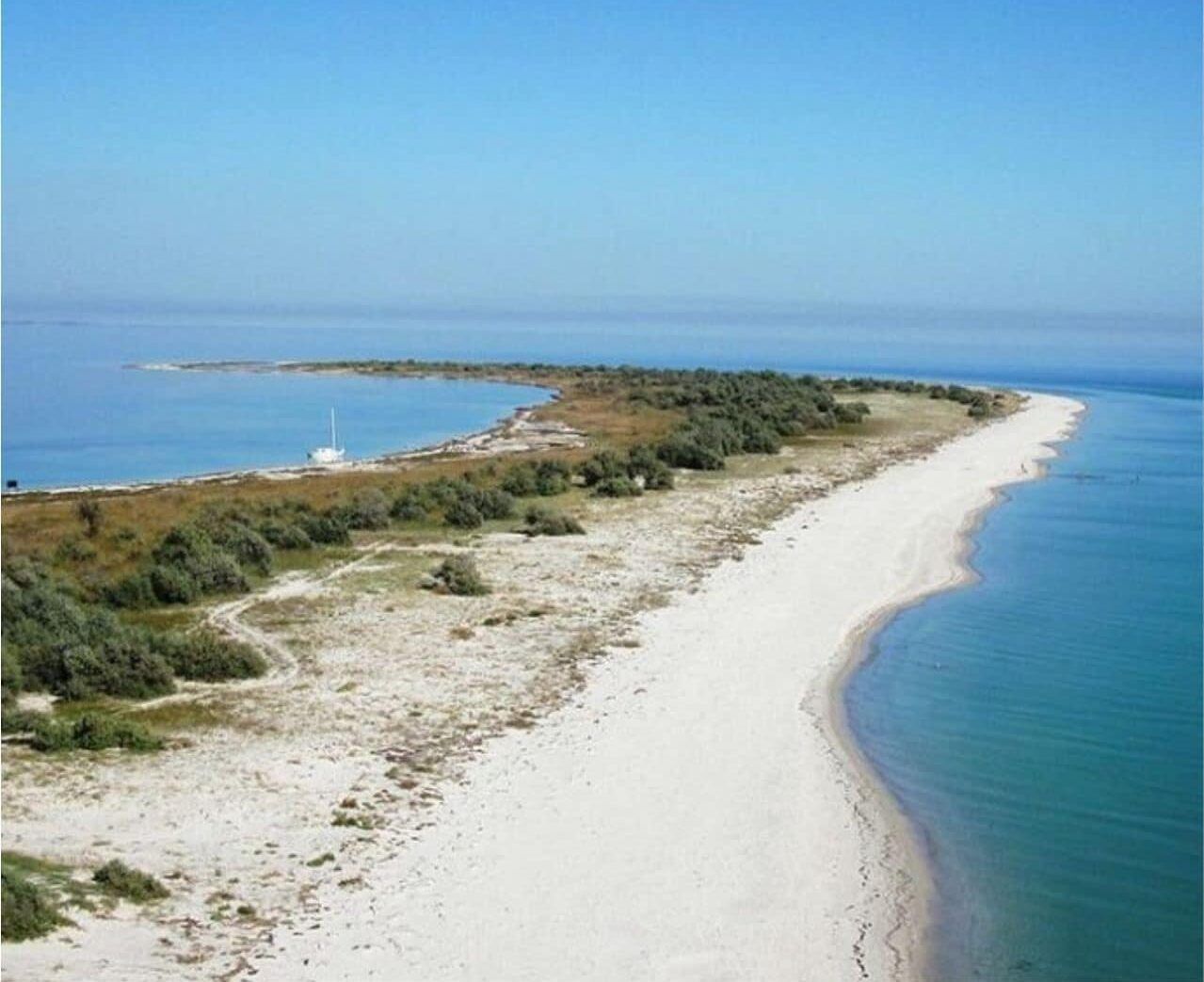
Kinburn Spit. Photo by the Ministry of Environmental Protection and Natural Resources of Ukraine
“Our native Kinburn. The land of dolphins and pelicans is dying from the flames. For four months now, fierce fighting and fires have been raging on the Kinburn Spit, which have already destroyed more than 70% of forests and ground cover. Animals and endangered plants are dying, and fires are reaching homes and threatening the lives of local residents. The clear sea is blackened with ash,” this is how the war on the Kinburn Peninsula was described by locals who were extinguishing large-scale fires with their own hands in the summer of 2022.

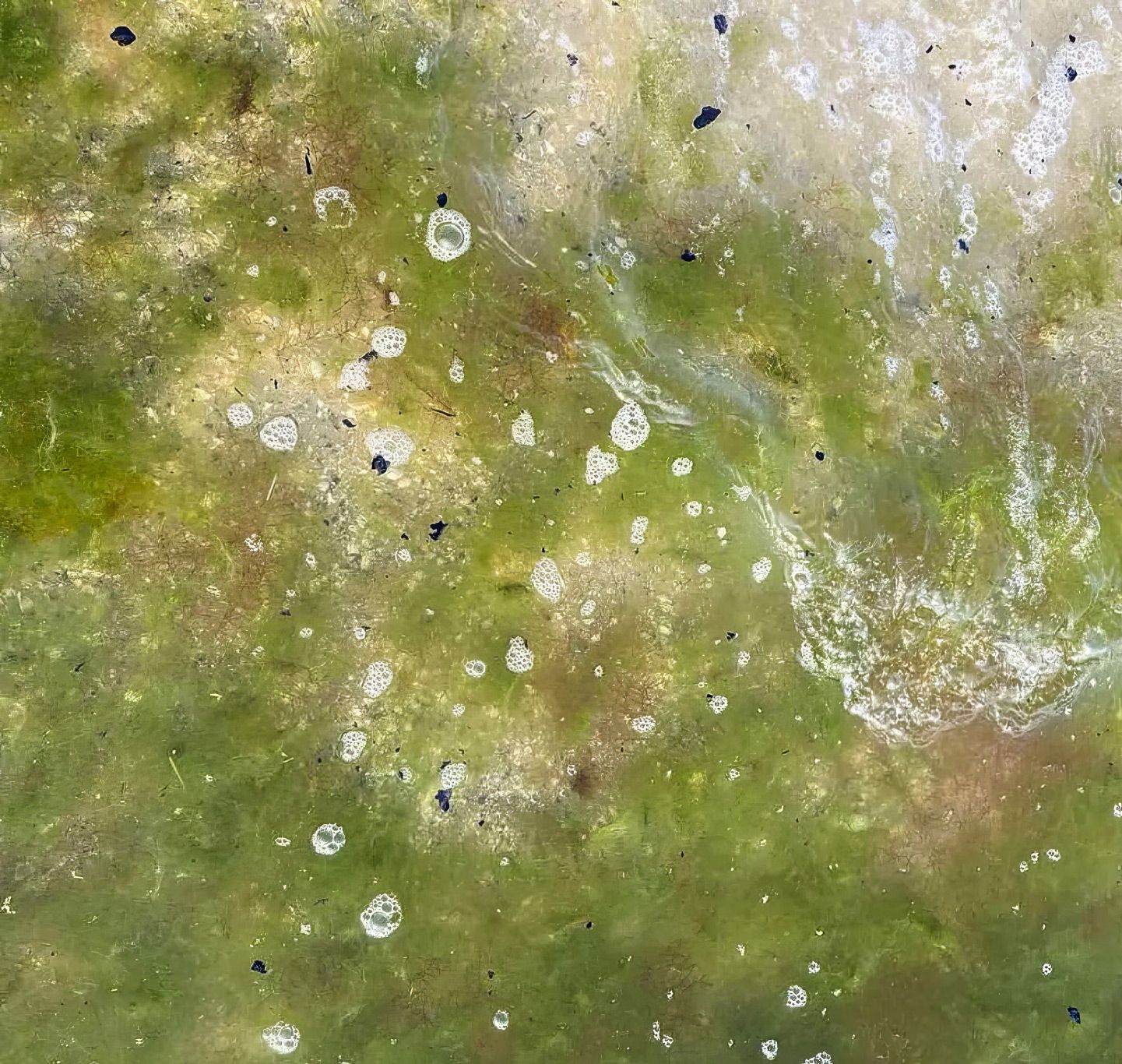
The aftermath of the fires on Kinburn in the summer of 2022. Photos by local residents
A crime against nature and people
On the night of June 6, 2023, the Russian military blew up the dam of the Kakhovka hydroelectric power plant, committing an unprecedented crime against the environment. Large amounts of water rushed toward the settlements of the Kherson region, destroying everything in its path.
Evacuation of Kherson residents after the dam was blown up. Photo: nikcenter.org
Two days later, on June 8, the Black Sea coast in Odesa turned into a garbage dump. Construction materials, dirt, garbage – all brought by a stream of fresh water from the Kherson region.
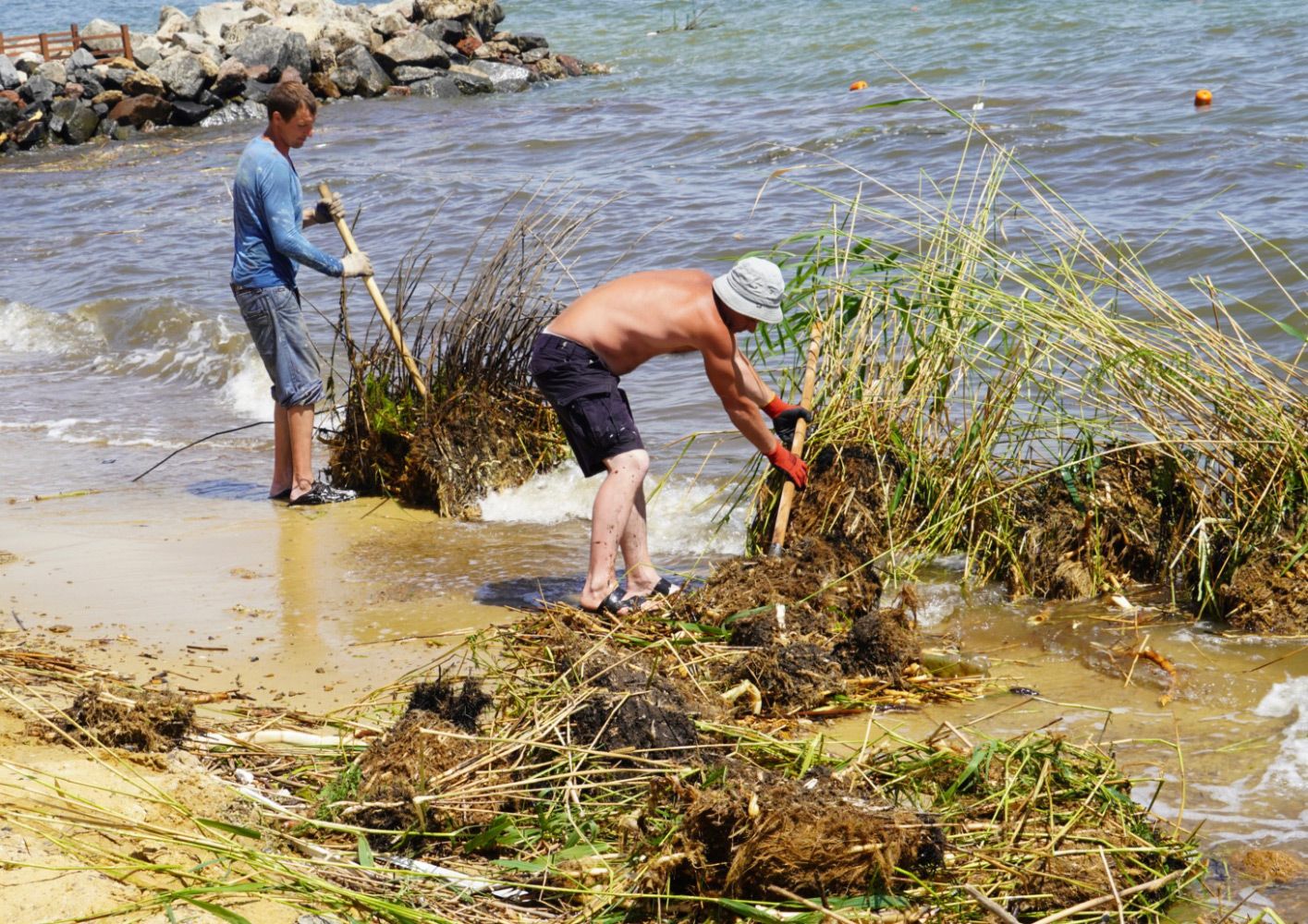
The Black Sea in Odessa three days after the dam was blown up. Photo: nikcenter.org
According to the Institute of Marine Biology of the National Academy of Sciences of Ukraine, acute toxicity of sea water was observed on the coast of Odesa during the first 5-6 days after the dam explosion. Halyna Minicheva, director of the Institute, recalls how she and her colleagues recorded the aftermath of the Russian terrorist attack on the Black Sea in the first days.
“For the first ten days, it was crazy. All these floating islands that you probably saw in the photos, all these freshwater organisms. For about a week, there was fresh water 1.5-2 meters deep in the sea, which led to the death of some organisms. There are still problems (related to the destruction of the hydroelectric power plant – Ed.) and there will be for a long time,” says Halyna Minicheva.
Research by scientists of the Black Sea water area. Photo: Institute of Marine Biology of the National Academy of Sciences of Ukraine
In the summer of 2023, Ukraine hosted a conference with the participation of domestic and international scientists on the impact of the destruction of the Kakhovka reservoir on the ecology and economy of the Northern Black Sea region. Experts’ opinions on the prospects for rebuilding the hydroelectric power plant were divided, but all noted the devastating impact of the Russian terrorist attack.
“By blowing up the Kakhovka HPP, the Russians caused an unprecedented environmental disaster in the Northern Black Sea region. They violated a number of international agreements, standards, and rules. The occupiers’ actions fall under the crime of ecocide. The habitat has been destroyed and fish, shellfish, birds, and animals have been killed, a number of settlements have been flooded and submerged, water supply has been disrupted, and the waters of the Dnipro and Black Sea and their coastal areas have been polluted. Large areas that were flooded were contaminated and polluted. Climate change in the affected area has been provoked due to an increase in open land areas and a decrease in the water surface area,” Maryna Zakharova, a researcher at the Institute of Soil Science and Agrochemistry, described the Russian terrorist attack.
Hostilities in the Black Sea
Click on the circle to get the details
Attack on a civilian vessel
A strike on a Russian warship
Shelling of the water area and coastal zone
A blow to infrastructure
After the Russian attack on the Kakhovka hydroelectric dam, members of the International Working Group on the Environmental Consequences of War visited Ukraine.
During the meeting, Vice-President of the European Parliament Heidi Gautala said: “Russia’s invasion of Ukraine has demonstrated the gravity of crimes against the environment throughout the war; in Ukrainian law, this is clearly an ecocide. The issue of responsibility for these crimes must be addressed both at the national and international levels,” said the Vice President of the European Parliament.
Russian Navy in the Black Sea
The presence of Russian warships in the Black Sea, off the Ukrainian coast, was detected even before the full-scale invasion. Employees of the Tuzly Estuaries National Nature Park, the only national park in southern Ukraine that has not been occupied by Russia, observed an increase in the concentration of Russian military forces.
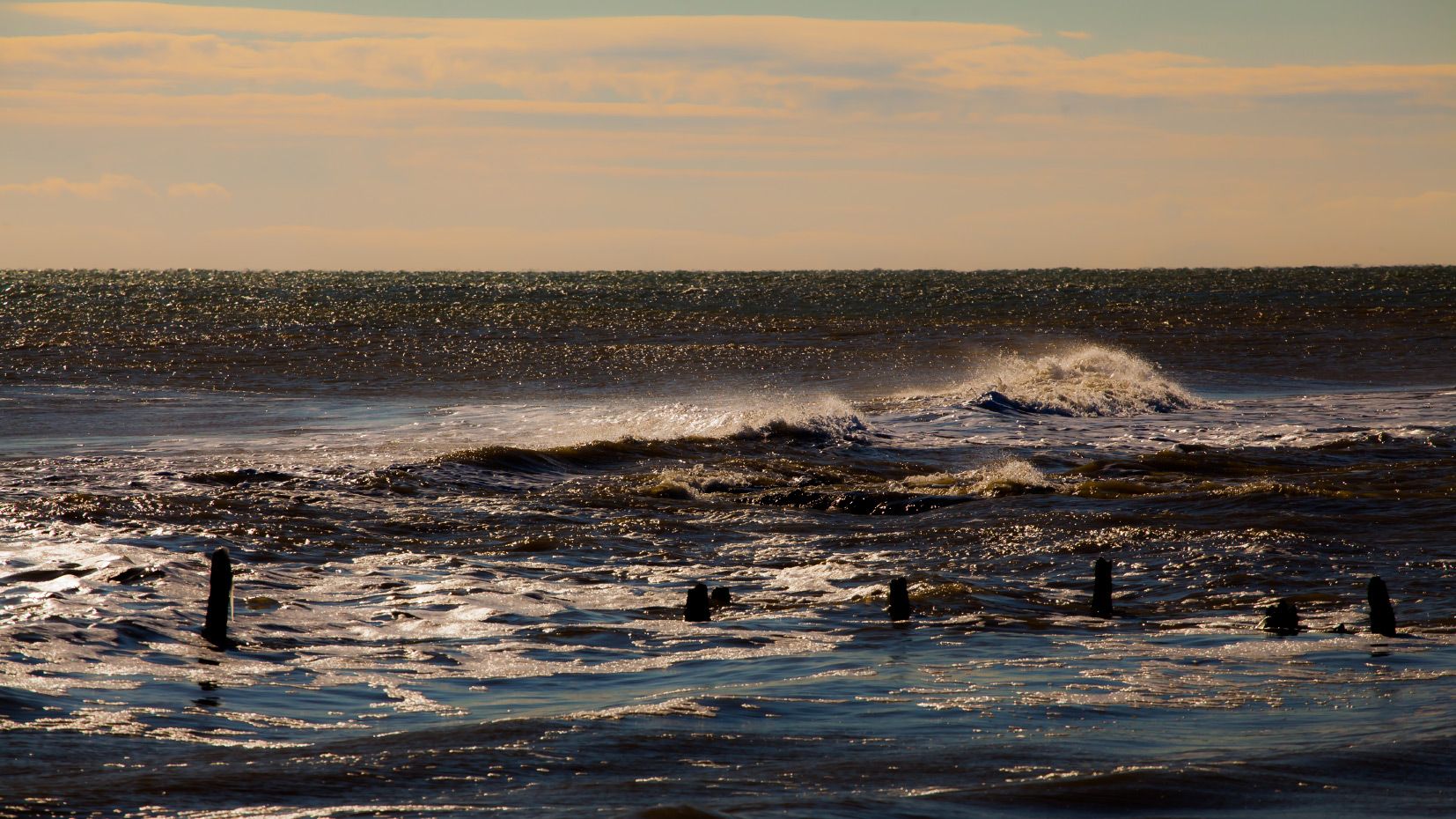
National Natural Park “Tuzlivski Lymani”. Photo by Yury Koshkovsky, nikcenter.org
“Before the war started, two weeks before, there were already a lot of Russians in this part of the water area. There were submarines and ships. They came very close at night, using sonars – sonar systems on submarines and warships that hit dolphins,” says Ivan Rusev, head of the scientific department of the Tuzly Estuaries Nature Park.
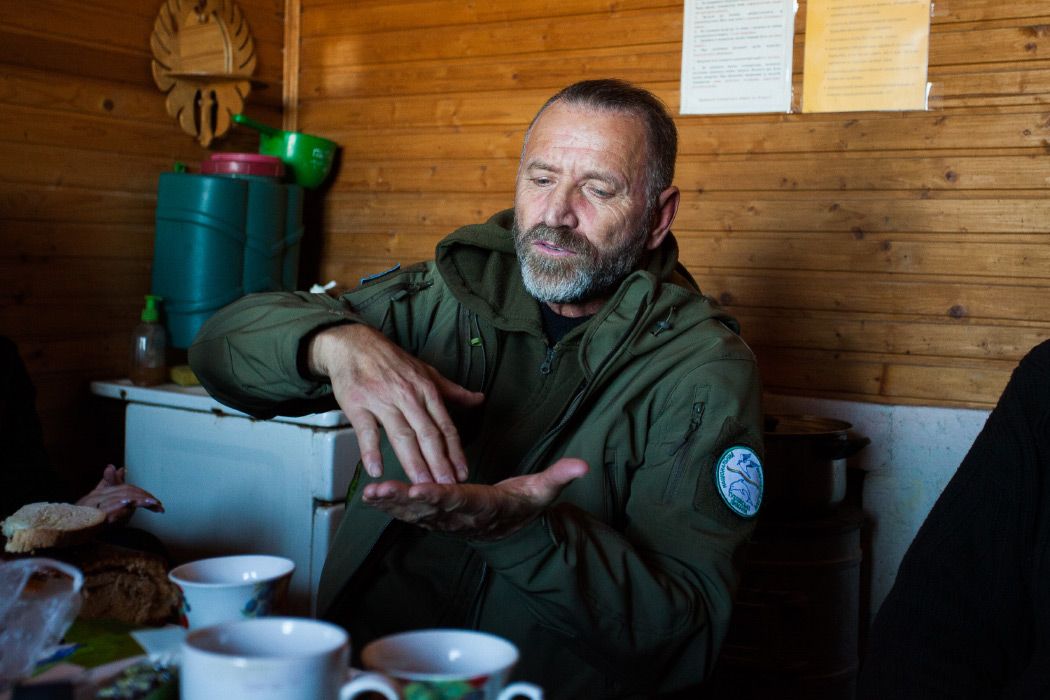
Ivan Rusev. Photo by Yury Koshkovsky, nikcenter.org
Since the start of the full-scale invasion, scientists have regularly observed the bodies of dead dolphins washing up on the coast in the Tuzly Estuaries. Previously, an average of three dead dolphins were found along the entire 44-kilometer stretch of coastline per year. In 2022, 52 dolphins were found in the 6-kilometer stretch of coastline that scientists have access to during the first six months of the full-scale war. However, scientists estimate that at least 50,000 dolphins died in the Black Sea from the beginning of the invasion until the de-occupation of Zmeinyi Island on June 30, 2022.
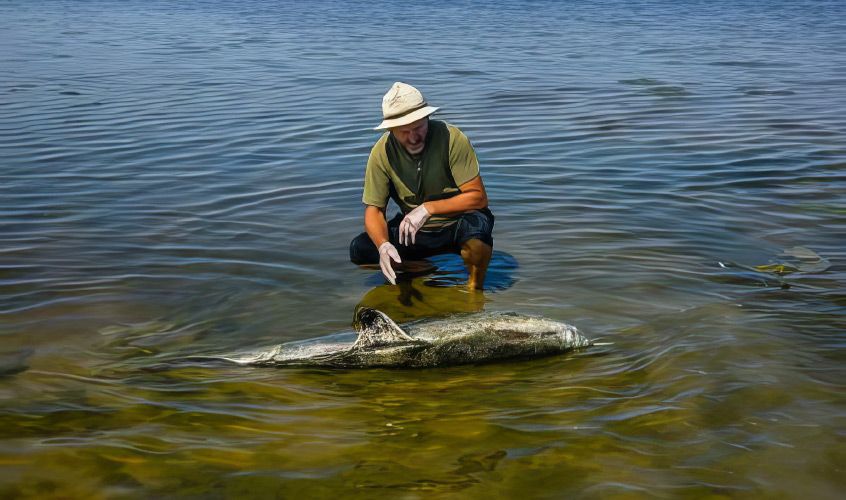
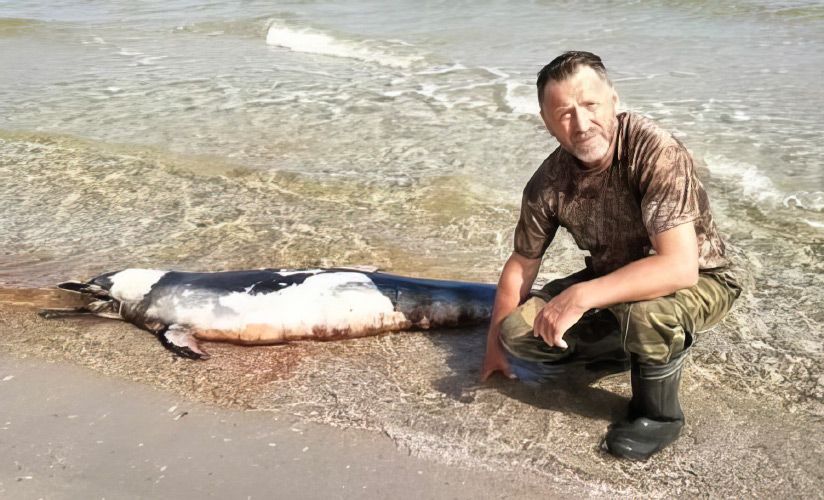
Dead dolphins on the coast in the Tuzly Estuaries National Park during the full-scale war. Photo by Ivan Rusev
“If the acoustic system is hit by sonar, the dolphin is blind, it cannot do anything. It drops behind the pack, it cannot catch fish. And after a few days, this animal becomes absolutely thin, starts using its internal fat that has been accumulating for years. And the Black Sea is polluted, and this fat is also polluted. Another problem is that there are always viruses in a healthy dolphin’s body, and if the immune system falls because it cannot rest, it becomes infected with viruses and dies of infectious diseases,” says Ivan Rusev.
According to the ecologist, active hostilities cause the greatest damage to marine organisms, as well as to the sea in general.
“Zmiinyi is 50 kilometers away from us. And there was a very powerful bombardment in our house, where the inspectors were staying, during the de-occupation of Zmiinyi. Our house was shaking from these explosions. That’s why when we talk about dolphins, they feel it more sensually in the sea, the sound is two to three times faster and more powerful in the water. When Zmiinyi was de-occupied, there were many dolphins killed,” the scientist says.
According to the Ukrainian Navy, at the beginning of the full-scale invasion, the Russian Black Sea Fleet had about 80 combat units. In February 2024, this number has already decreased significantly: 26 units have already been destroyed, and another 15 have been seriously damaged.
Some of the damaged Russian ships that posed a threat to Ukrainians and had already attacked peaceful cities sank. The most famous of these is the destroyed battleship Moskva.
Moskva sank on April 14, 2022 at a depth of 45-50 meters. The wreckage of the destroyed cruiser, according to a joint report by the Conflict and Environment Observatory and the Zoya Environmental Network, is likely to become a source of sea pollution.
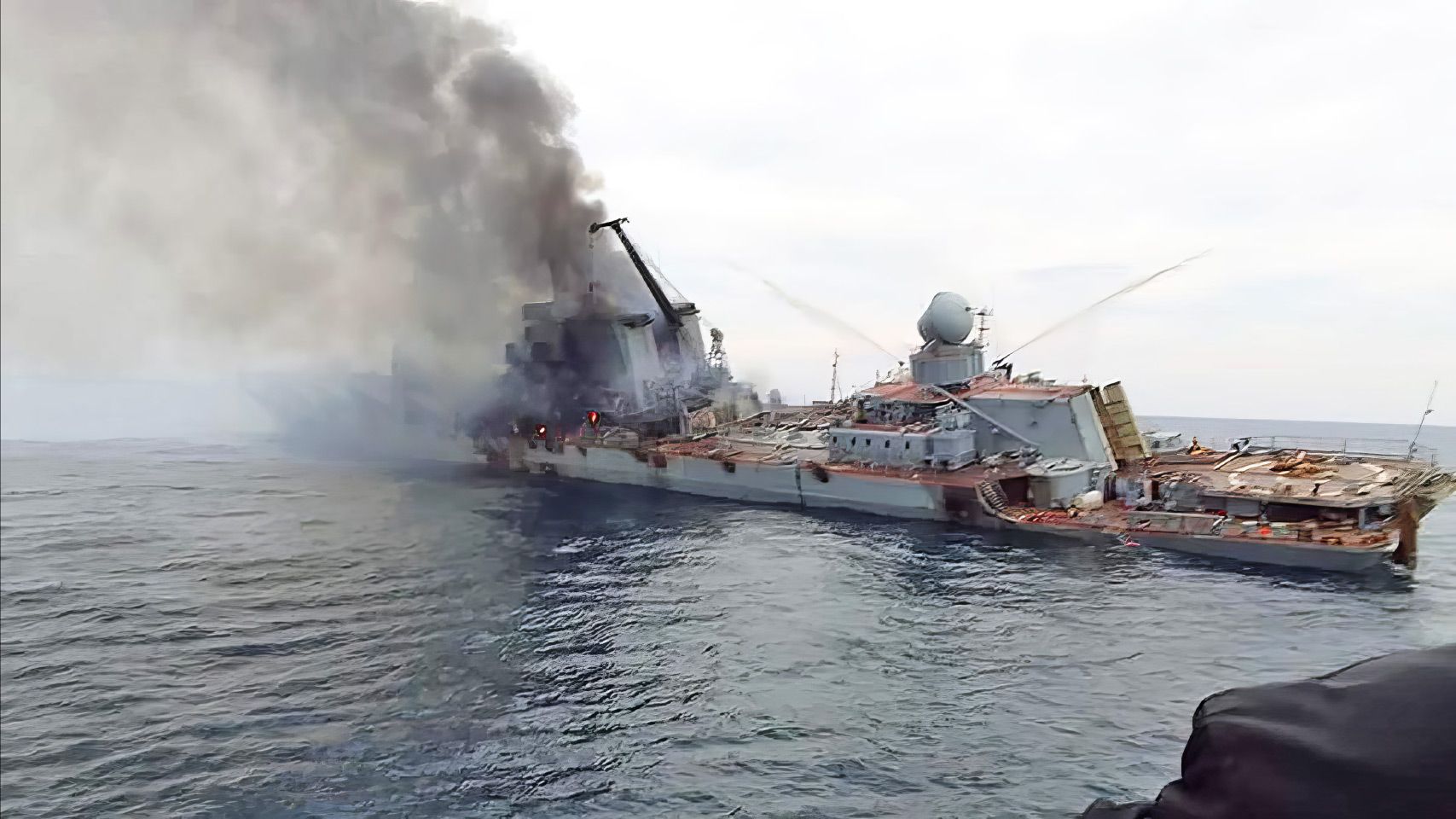
Cruiser “Moscow” hit by Ukrainian “Neptune” missiles. Photo from Russian sources
Significant oil slicks in the Black Sea were spotted after the Ukrainian Defense Forces struck the so-called Boyko rigs, gas drilling platforms used by Russia to monitor the surface situation in the Black Sea.
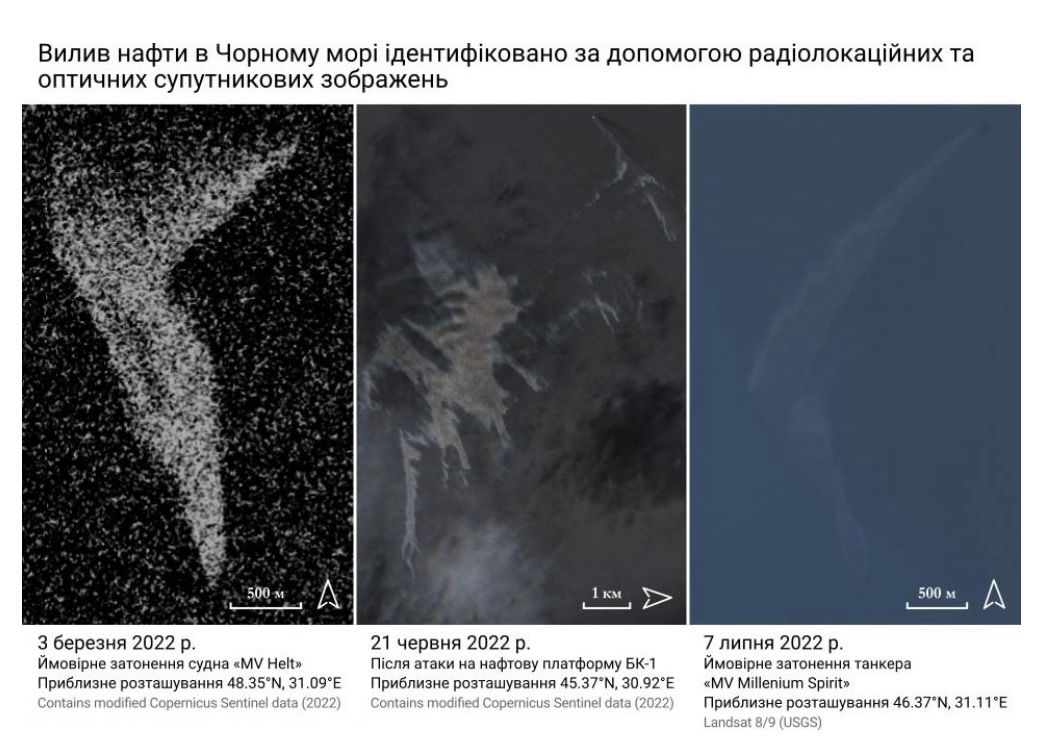
Oil slicks in the Black Sea after the Boyko oil rig was damaged. Photo from the report of the Conflict and Environment Observatory and the Zoy Environmental Network
After the powerful Ukrainian attack on the platforms in the summer of 2022, the scientists of Tuzly Estuaries say that they watched them burn for a year.
Examples of pollution of the water areas of Ukraine, in particular the water areas of the Nature Reserve Fund (NPF) of Ukraine, with oil products as a result of military operations:
National Natural Park “Biloberzezhya Svyatoslav”
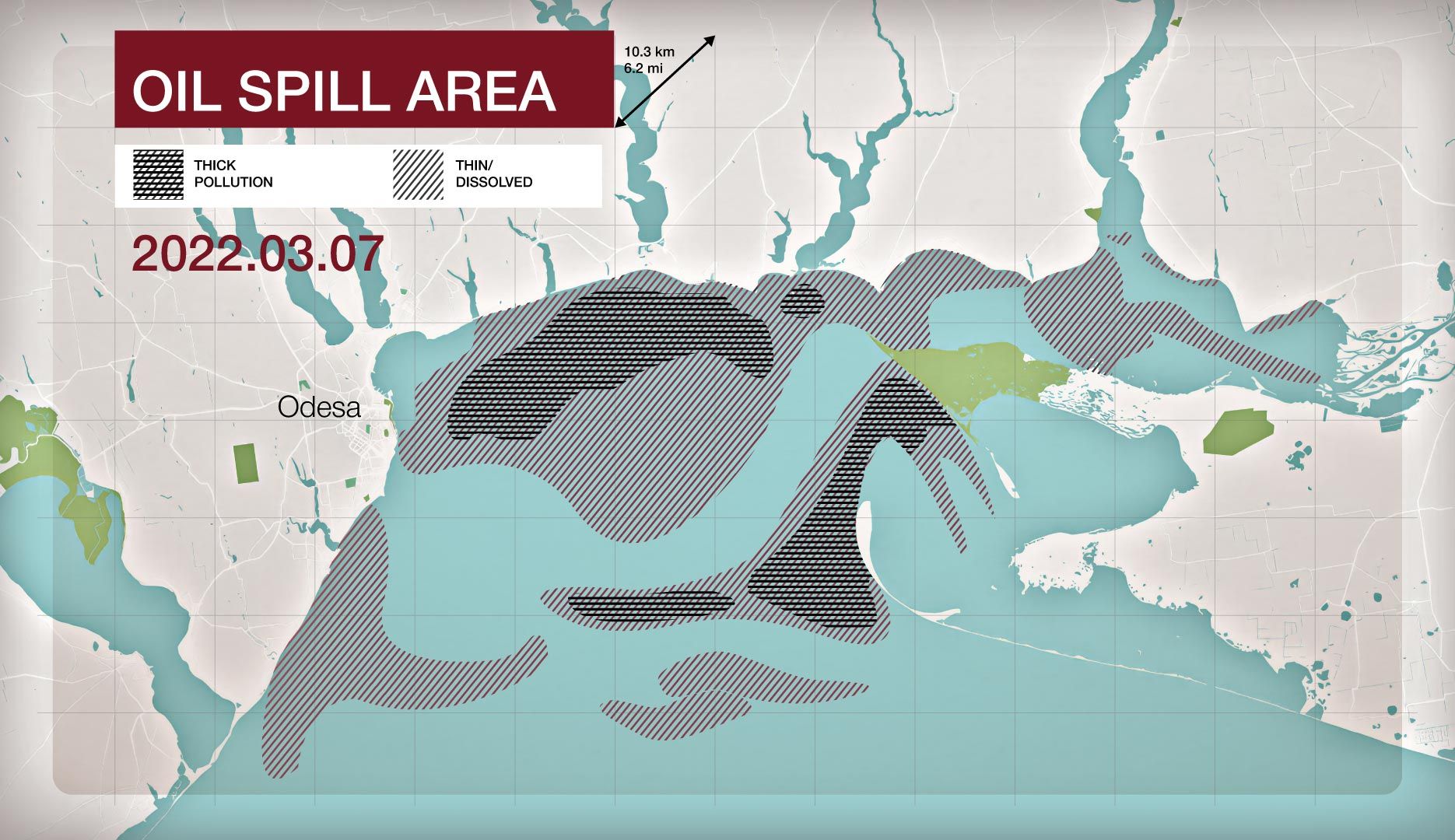
Black Sea Biosphere Reserve NAS of Ukraine
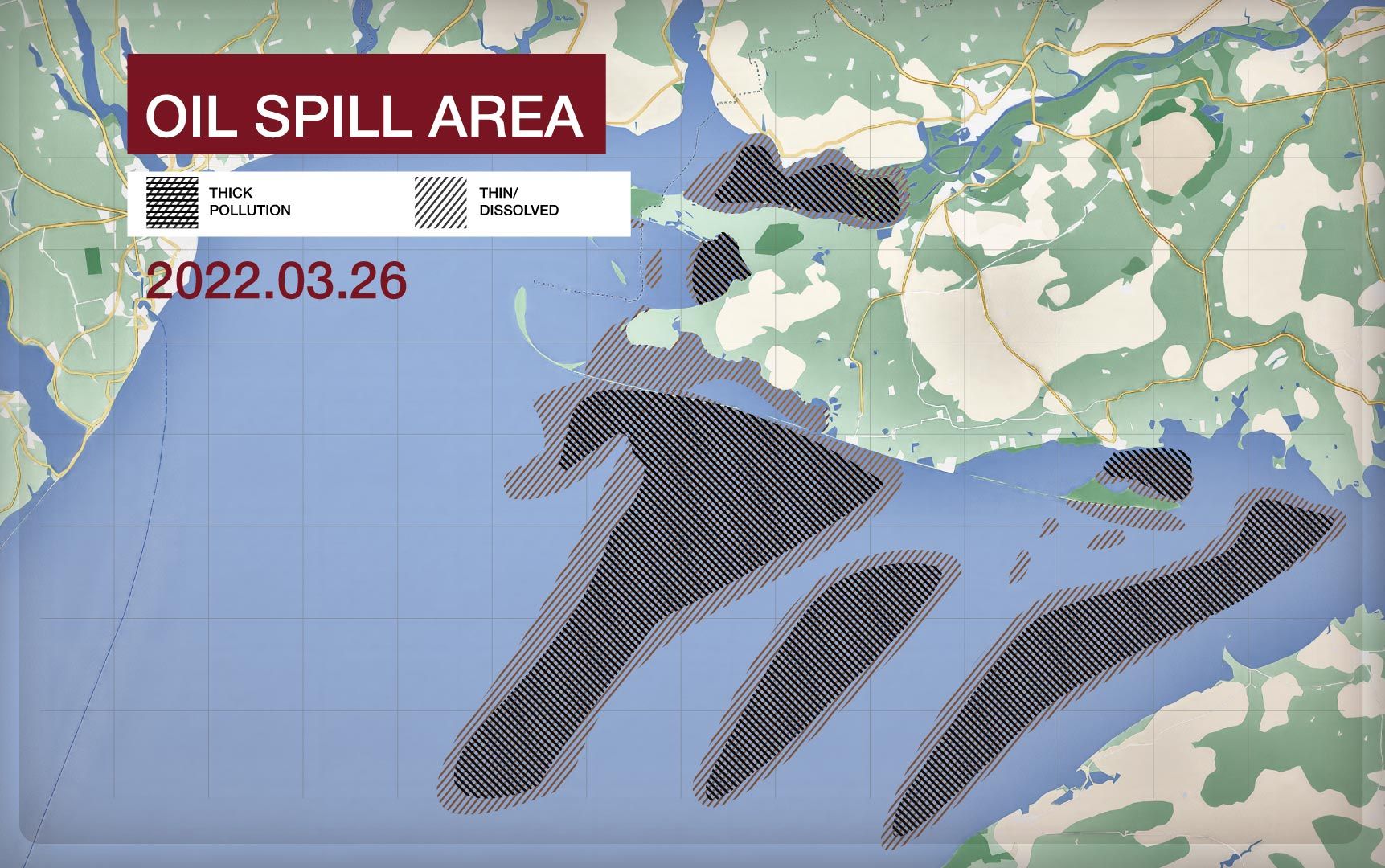
Botanical reserve of national significance “Filoforne field of Zernov”
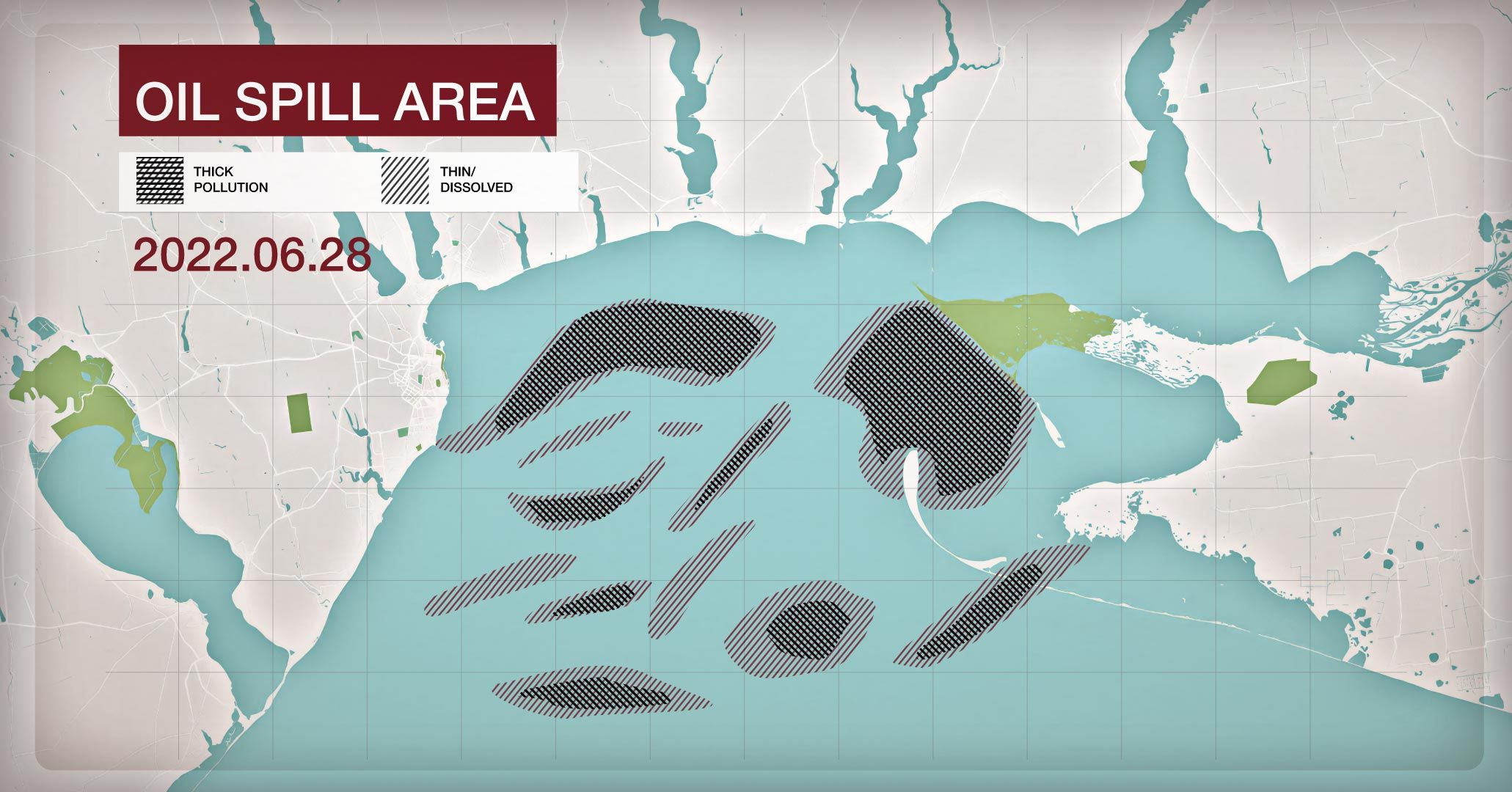
According to the Ministry of Environmental Protection and Natural Resources of Ukraine, the full-scale war caused almost 7.5 billion euros in damage to the Black Sea region. It is currently impossible to assess the real damage due to the lack of access to the sea for scientists.
“It’s very difficult to collect information because if an airplane crashes or a ship sinks somewhere far out to sea, it’s very difficult to assess the damage. Over time, the ship rusts and if there were any chemicals on the ship, such as oil products or fuel, they can gradually come to the surface and pollute the marine environment. What we are doing is observing short-term changes. No one can make any predictions for the future based on them. Until we have open access to the sea, I don’t think anyone will make any predictions,” says Yulia Kalinina, head of the marine environment protection department of the State Environmental Inspectorate of the Southwestern District of Ukraine.
Infrastructure damage and chemical pollution at sea
“Every destroyed piece of equipment that ends up in the sea causes irreparable damage. So do attacks on ports and terminals. A lot of oil products, fuels and lubricants end up in the sea. After the hydroelectric power station was blown up, cattle cemeteries, cemeteries, etc. were flooded – all of which ended up in the sea. In Zatoka, Odesa region, pathogens of intestinal infections were found in the water.
The coasts are mined and the Kinburn Spit is terribly mined. The part of the Black Sea that falls on Ukraine and Romania is of crucial importance for the reproduction of marine species, so the impact on the sea will be irreparable,” summarizes Oleg Derkach, Deputy Head of the National Ecological Center of Ukraine.
The attacks on Ukraine’s port infrastructure began on the first day of the full-scale war and continue to this day. The ports of Odesa and Mykolaiv regions have been under enemy attack.
On June 4, 2022, the Russians launched a powerful missile attack on the Nika-Tera port in Mykolaiv, Ukraine’s second largest grain terminal. Despite the efforts of rescuers, the fire was extinguished for at least a day.

The burning port “Nika-Tera” in Mykolaiv. Photo from open sources
The occupiers also targeted the oil terminal in Mykolaiv. The terminal has a permanent storage capacity of 160,000 tons and can transship 1.5 million tons of vegetable oil for export per year. During 2022, the oil terminal was attacked by Russia at least twice.
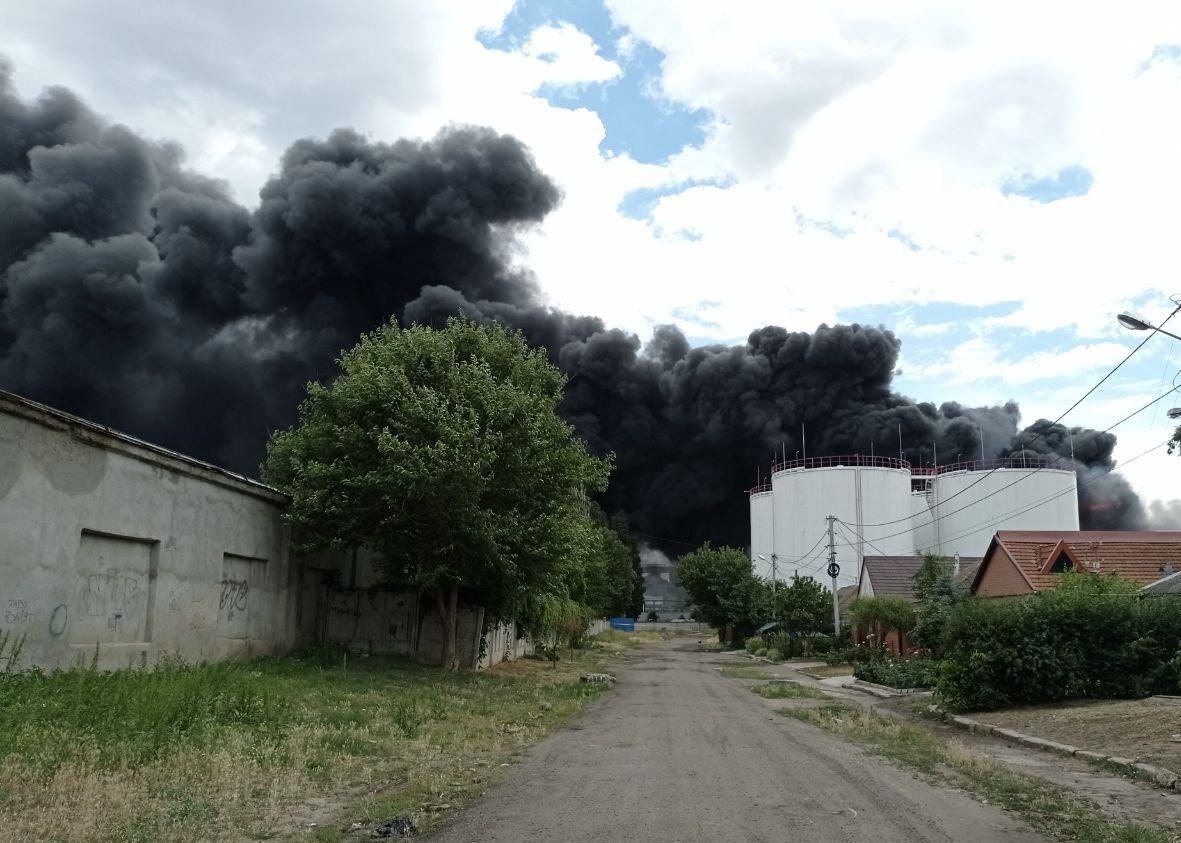
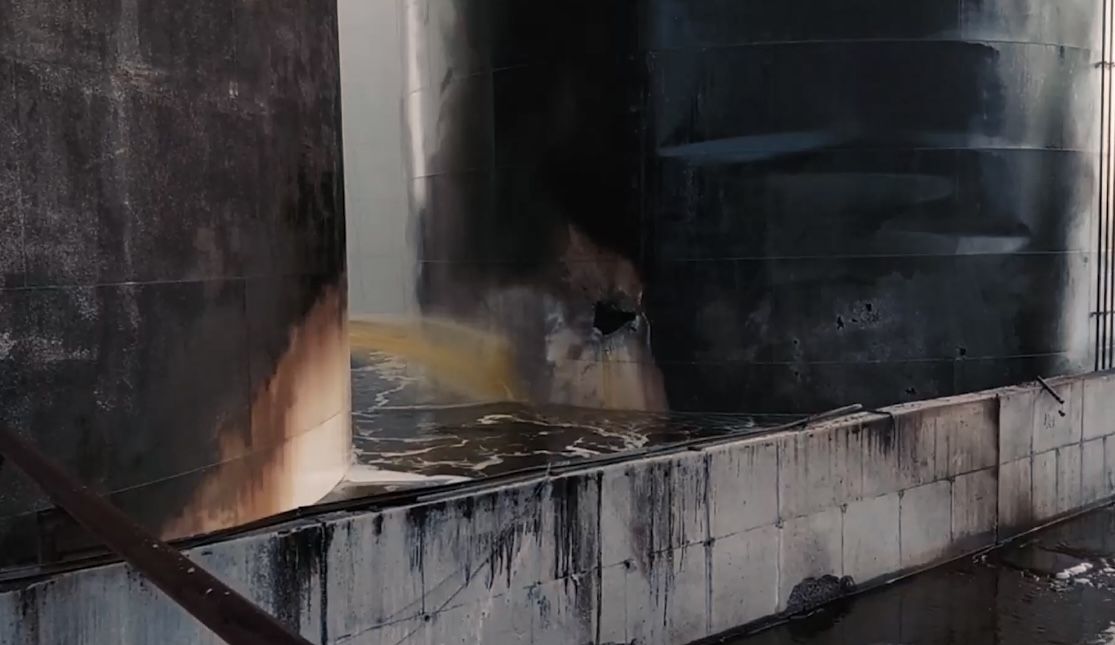
Consequences of the Russian strike on sunflower oil tanks at the Everi terminal in Mykolaiv. Photo: nikcenter.org
After the attack on the tanks at the oil terminal, oil spilled into nearby streets and eventually into the sewer system. Soon after, satellite imagery captured the first discharge of this pollution from the harbor of the Nibulon shipyard into the Bug estuary, which flows into the Black Sea.
Since mid-summer 2023, the Russian occupiers have been attacking the ports of Odesa region almost every night. In just two and a half months, more than 400 kamikaze drones and 70 missiles were fired at the facilities.
Environmentalists note that the war is leading to large-scale pollution of the Black Sea, which was previously considered the most polluted sea in Europe. Due to the full-scale Russian invasion of Ukraine, there is noisy, chemical, oil, and radiation pollution, especially in the northwestern part of the Black Sea.
Russian actions in the Black Sea are classified as ecocide. The researchers work extensively with law enforcement agencies to document the crimes of the Russians and develop a methodology for proving environmental damage in order to bring them to justice at the international level.
Tuzly Estuaries National Nature Park. Photo by Yurii Koshkovskyi, nikcenter.org
“We are working out a methodology at the international level that will allow us to further assess all this damage and then assess the damage caused by this damage in order to present it to an international court. In each case, a separate criminal case is opened, which involves the police, prosecutors, the Security Service of Ukraine, with the involvement of specialists and experts. We are talking about ecocide – intentional damage to the natural environment. This is not an accident, no, it is a targeted, intentional damage to the natural environment,” says Viktor Komorin, director of the Ukrainian Scientific Center for Marine Ecology.
Despite the large-scale pollution, scientists still note the positive impact of the hostilities in the Black Sea on the environment. In particular, commercial fishing and shipping have virtually stopped due to the mining of the area. The death of some marine species has probably led to the appearance of others near the Odesa shores of the Black Sea, such as marble crabs, which were observed after the Kakhovka hydroelectric power station dam was blown up and mussels died in large numbers.
At the same time, environmentalists believe that Russia should be punished for non-compliance with the documents it signed, including the Convention on the Protection of the Black Sea, and for deliberate damage to Ukraine’s environment.
The research was conducted by Nikcenter and partners:
Text: Oleg Oganov, Olesya Boreiko
Design: Oleksandr Sideliev
Photo: Yuriy Koshkovsky
This article was developed with the support of Journalismfund Europe.
